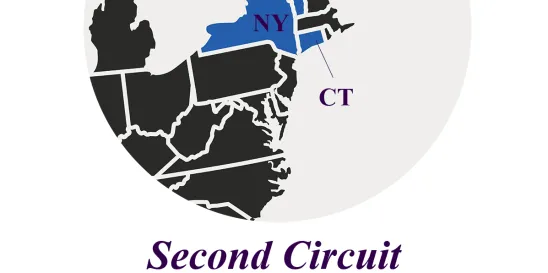On February 8, 2024, the Supreme Court in a 9-0 decision reversed and remanded the decision of the U.S. Court of Appeals for the Second Circuit in Murray v. UBS Securities, LLC. The case involved the anti-retaliation provision of the Sarbanes-Oxley Act of 2002, 18 U.S.C. § 1514A (“SOX”). In particular, the decision analyzed the question of what a plaintiff needs to show to establish causation in a SOX retaliation claim. Rejecting the decision of the Second Circuit, the Court found that a plaintiff does not need to prove retaliatory intent to establish causation in a SOX retaliation claim. This is a critical holding overruling a vexing decision by the Second Circuit that, if it had been adopted by the Supreme Court, would have imposed a significant additional hurdle on plaintiffs seeking relief under the SOX retaliation provision.
In general, plaintiffs pursuing SOX retaliation claims must prove four elements:
- That their employer is covered by SOX, which generally extends its protections to employees of publicly traded companies and their contractors;
- “Protected activity,” i.e., that they engaged in some activity that was protected by SOX, including opposing or raising concerns about fraud or violations of the securities laws;
- An “adverse action,” i.e., that their employer subjected them to some action that would dissuade a reasonable person from blowing the whistle; and
- Causation, i.e., a causal connection between the protected activity and the subsequent adverse action.
The Murray case involved the last of these elements. The statute provides that a SOX-covered employer may not “discriminate against an employee . . . because of” a protected activity undertaken by that employee. 18 U.S.C. § 1514A(a). Later in the statute, SOX clarifies that an action brought under the statute “shall be governed by the legal burdens of proof set forth in” the Wendell H. Ford Aviation Investment and Reform Act for the 21st Century, 49 U.S.C. § 42121 (“AIR21”), which is a separate whistleblower protection statute applicable to employees in the aviation industry. In other words, SOX provides that litigants under the statute should look to AIR21 for the “legal burdens of proof” that will govern claims brought under SOX. AIR21, in turn, states that an employee can establish causation by showing that her protected activity “was a contributing factor in the unfavorable personnel action alleged in the complaint.” 49 U.S.C. § 42121(b)(2)(B).
This “contributing factor” causation standard is a critical element of AIR21 and the statutes, like SOX, that rely on the AIR21 burden of proof. Courts have described it as a “broad and forgiving” causation standard, as distinct from some of the other causation standards controlling anti-retaliation statutes. Greatwide Dedicated Transp. II, LLC v. United States Dep’t of Lab., 72 F.4th 544, 556 (4th Cir. 2023) (noting that “[a] contributing factor is any factor which, alone or in combination with other factors, tends to affect in any way the outcome of the [adverse personnel] decision” (internal quotation marks and citations omitted)).
Defendants in SOX retaliation cases have for years been attempting to manufacture a separate causation requirement, arguing that SOX claimants must prove “retaliatory intent” in order to prevail on their claims. For years, courts rejected those efforts. See Halliburton, Inc. v. Admin. Rev. Bd., 771 F.3d 254, 263 (5th Cir. 2014) (holding that retaliatory intent is not an element of a SOX retaliation claim); Coppinger-Martin v. Solis, 627 F.3d 745, 750 (9th Cir. 2010) (same). Those courts pointed to the “contributing factor” standard as a reason that this additional showing was not necessary. See, e.g., Halliburton, 771 F.3d at 263 (“[A]ccording to Halliburton, an employee must prove a ‘wrongfully-motivated causal connection.’ The principal problem with Halliburton’s argument is that it conflicts with our statement in Allen that a ‘contributing factor’ is ‘any factor, which alone or in combination with other factors, tends to affect in any way the outcome of the decision.’” (citations omitted)).
The case resulting in the Supreme Court’s Murray decision began with a termination that occurred in 2012. At that time, Trevor Murray was a research strategist at UBS, a New York-based securities firm, working in the company’s commercial mortgage-backed securities business. After receiving what he perceived as improper pressure to skew his reports, Murray reported the conduct to his supervisor. Murray’s supervisor subsequently recommended his termination or transfer, and UBS terminated his employment. Murray filed a charge with the Department of Labor, removed his case to federal court, and a jury found in his favor, awarding Murray nearly $1,000,000 in damages.
As to causation, the trial court instructed the jury that “[f]or a protected activity to be a contributing factor, it must have either alone or in combination with other factors tended to affect in any way UBS’s decision to terminate [his] employment.” The trial court did not instruct the jury that Murray needed to make a separate showing of retaliatory intent. On this basis, among others, UBS appealed the case to the Second Circuit, arguing that the absence of such an instruction was in error.
In 2022, the Second Circuit departed from the findings of the Fifth and Ninth Circuits and held that a SOX retaliation plaintiff must separately prove retaliatory intent in order to prevail in her claim. Relying on the “discriminate against” and “because of” language in 18 U.S.C. § 1514A(a), the court found that “to prevail on the ‘contributing factor’ element of a SOX antiretaliation claim, a whistleblower-employee must prove that the employer took the adverse employment action against the whistleblower-employee with retaliatory intent—i.e., an intent to ‘discriminate against an employee . . . because of’ lawful whistleblowing activity.” Murray v. UBS Sec., LLC, 43 F.4th 254, 259–60 (2d Cir. 2022) (citation omitted). The Second Circuit particularly appeared to imbue a special meaning to the word “discriminate,” suggesting that to “discriminate” necessarily connotes a showing of animus. Id. at 259. Murray appealed the decision to the Supreme Court and the Court granted certiorari on May 1, 2023.
On February 8, 2024, the Supreme Court reversed the Second Circuit’s decision and found that SOX retaliation plaintiffs need not prove retaliatory intent on the part of the employer. The Court first disputed the Second Circuit’s central reasoning, that the use of the term “discriminate” in the SOX retaliation provision necessitated a showing of animus. As the Court explained:
Consider the statutory text: No employer subject to Sarbanes-Oxley “may discharge, demote, suspend, threaten, harass, or in any other manner discriminate against an employee in the terms and conditions of employment because of” the employee’s protected whistleblowing activity. § 1514A(a). To start, the placement of the word “discriminate” in the section’s catchall provision suggests that it is meant to capture other adverse employment actions that are not specifically listed, drawing meaning from the terms “discharge, demote, suspend, threaten, [and] harass” rather than imbuing those terms with a new or different meaning.
Murray v. UBS Sec., LLC, No. 22-660, 2024 WL 478566, at *6 (U.S. Feb. 8, 2024). As the Court explained, “there is no dispute that Murray was ‘discharge[d],’ and so it is not obvious that the ‘or in any other manner discriminate’ clause has any relevance to his claim.” Id.
The Court then put a finer point on its holding: “the question is whether the word ‘discriminate’ inherently requires retaliatory intent. It does not.” Id. The Court cited its holding in Bostock v. Clayton County, 590 U. S. 644 (2020), which it explained “made clear that a lack of ‘animosity’ is ‘irrelevant’ to a claim of discrimination under Title VII.” Murray, 2024 WL 478566, at *6 (citing Bostock, 590 U. S. at 663). Thus, the Court concluded, “[a]n animus-like ‘retaliatory intent’ requirement is simply absent from the definition of the word ‘discriminate.’” Id. As a result, the Court found that “[t]he Second Circuit was wrong when it held that the word ‘discriminate’ in the statute’s catchall provision imposes an additional requirement that the whistleblower plaintiff prove the employer’s ‘retaliatory intent’ or animus.’” Id. at *7.
The Court went on to emphasize that “the incorporation of the contributing-factor standard in Sarbanes-Oxley reflects a judgment that ‘personnel actions against employees should quite simply not be based on protected [whistleblowing] activities’—not even a little bit.” Id. (citation omitted). “The ordinary meanings of the words ‘contribute’ and ‘factor’ suggest that the phrase ‘contributing factor’ is broad indeed.” Id. at *8. Thus, the Court explained, “[s]howing that an employer acted with retaliatory animus is one way of proving that the protected activity was a contributing factor in the adverse employment action, but it is not the only way.” Id. In conclusion, the Court held:
To be sure, the contributing-factor framework that Congress chose here is not as protective of employers as a motivating-factor framework. That is by design. Congress has employed the contributing-factor framework in contexts where the health, safety, or well-being of the public may well depend on whistleblowers feeling empowered to come forward. This Court cannot override that policy choice by giving employers more protection than the statute itself provides.
Id. at *9.
Those of us who regularly practice whistleblower law and represent employees under the SOX retaliation provision know well that it is a powerful statute designed to provide powerful protections to employees of publicly traded companies and their contractors. For that reason, the Second Circuit’s decision was jarring, as it appeared to undermine statutory language plainly designed to guard against retaliation even in those instances where retaliatory intent was not readily provable. The Supreme Court’s decision in Murray is a welcome relief and a vindication for practitioners who have long touted the breadth and strength of SOX as a tool to protect and encourage whistleblowing.



 />i
/>i
